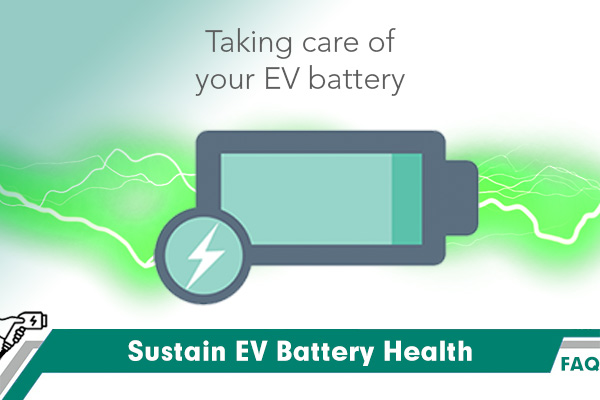
There is a lot you can do to keep your battery in top condition. With our tips you don’t have to worry about your battery losing capacity.
With these tips you don’t have to worry about your battery losing capacity, and you can be sure that you will be able to make long journeys with your electric car without difficulty in many years to come.
People are often concerned about the lifespan of the battery pack in an Electric Vehicle. Although EV batteries do lose capacity over time, you don’t have to worry. Modern EV batteries will still have at least 90% capacity after 10 years if you take good care for it. So even after 10 years, the degradation will be minor. You probably won’t even notice it. As with everything in life, things last longer if you take care for it.
We are happy to provide you with some tips that will help keep your battery in a healthy condition for a long time.
- Do not fully charge the battery. A maximum of 80% is advised.
- Only charge if you need to.
- Storing your car for longer periods of time. A maximum of 60% is advised.
- Charging to 100%, or completely discharge. Please don’t.
- Do not Fast Charge too often
Do not fully charge the battery
One of the worst things you can do for your battery is continuously charge it to 100 percent.
We advise you to charge the car to a maximum of 80% and not to let the battery percentage fall below 20% during normal and daily use. This way you prevent unnecessary degradation.
If you plan to make a long journey, it is no problem to charge to 100% occasionally.
Only charge if you need to
Do you only make short journeys every day? Or do you not necessarily have to charge to reach your next destination or to commute on your next day? Don’t do it! Every charging session degrades the battery a little bit. Don’t worry; In time you will automatically develop experience whether you need to charge or not.
Storing your car for longer periods of time
If you leave the car for a longer period of time, a State of Charge (SoC) of 50 to 60 percent is optimal.
Charging to 100%, or completely discharge
That in itself is not a problem, as long as you start driving soon after charging. Fully charging the car and then leaving it for a few days is bad for the battery.
This also applies to the other side of the spectrum: It is not a problem if you completely discharge a battery on occasion, but be sure to charge it immediately.
Please be aware that driving with a capacity below 20%, you will notice that you will get much less mileage than expected or stated in your dashboard.
Push the edges (sometimes)
We’re not talking about accelerating as quickly as possible or taking every corner as sharply as possible. No, drive the battery from 100 to approximately 10 to 5 percent empty once a year. If you always stay within the stated 20 to 80 percent, the battery management system sometimes does not fully know when the battery is really full or empty. By fully charging the battery and then driving it empty, you calibrate the system again, so to speak.
Do not Fast Charge too often
Immediately a ‘but’, because recent research shows that fast charging does not have to be that bad for your car. For example, Tesla published another study in 2023 that showed that there was no difference in battery performance between cars that were often, or almost never, connected to a fast charger.
It is not wise to fast charge at extreme temperatures, but that also depends on your car. Many modern electric cars have an active cooling system that circulates coolant between the battery cells to keep the battery at the right temperature. In such a case, fast charging is not bad for the battery, because the car can deal with it.
If you have an older car without such an active cooling system, there is a chance that the battery will overheat during fast charging at higher temperatures, or during longer journeys where more frequent fast charging is necessary. If it is not necessary, always make sure that you charge the car via ‘slow’ AC charging stations and therefore with alternating current.
On Curacao we don’t have to worry much about Fast-Charging as there is only 1 public fast-charger on the island.
Why are these tips necessary?
This is all due to the chemical structure of the lithium-ion batteries: that type is currently in the majority of all electric cars. Charging and using the battery are actually chemical reactions in the battery cells, and lead to mechanical damage over time, causing capacity to slowly decrease. To keep the decrease to a minimum, it is advised to follow our tips.
Battery lifespan is often measured in cycli, the number of times a battery cell can load and unload. For a lithium-ion the expected lifespan is around 2300 cycli.
There are new developments such as the so-called LFP (iron-phosphate) batteries, which you will find in more and more cars like the Tesla and BYD. It is expected that LFP batteries will dominate the market in 2030. Charging a LFP battery to 100 percent is actually no problem. For the LFP battery cell the lifespan will be around 5000 cycli. Much better than the currently used batteries.
